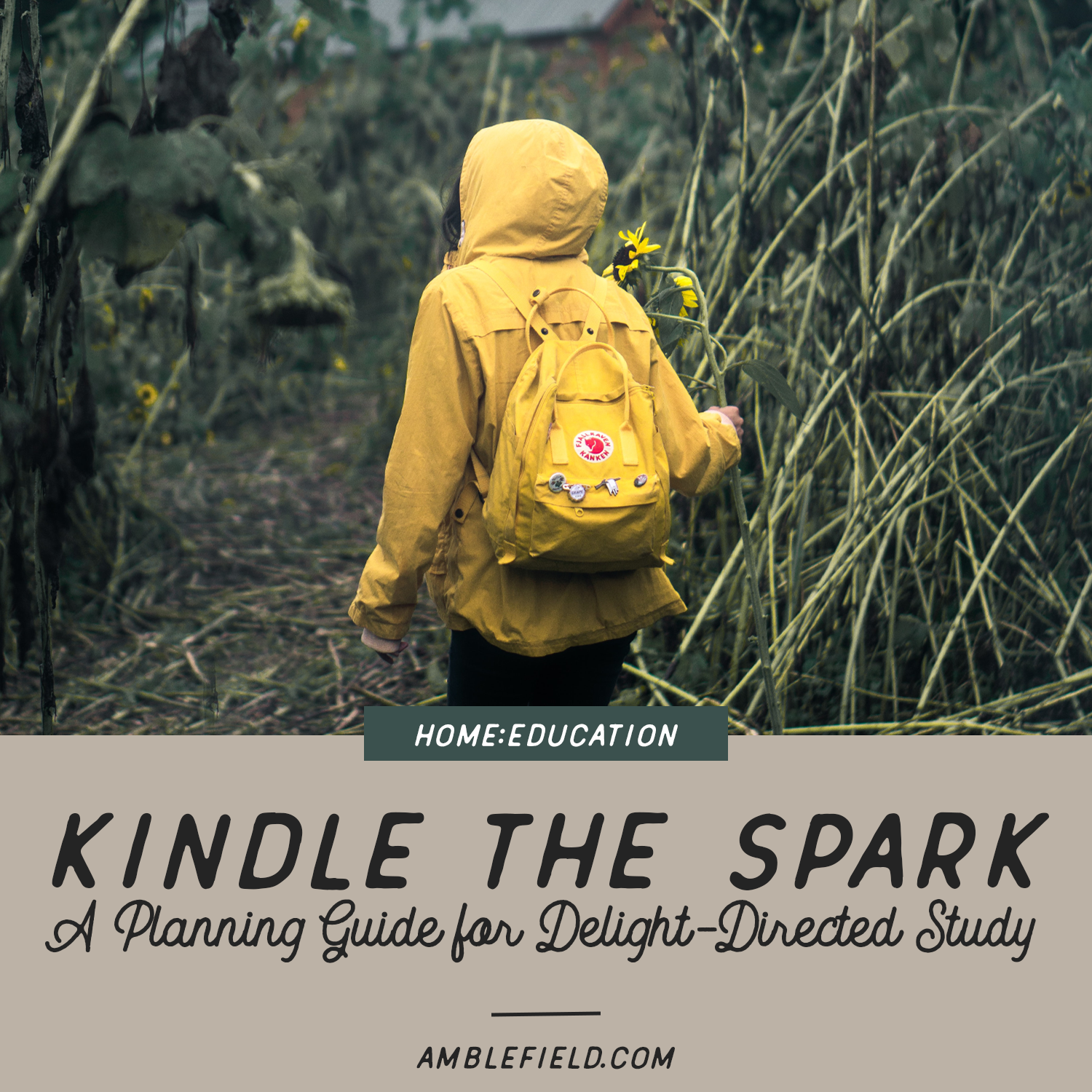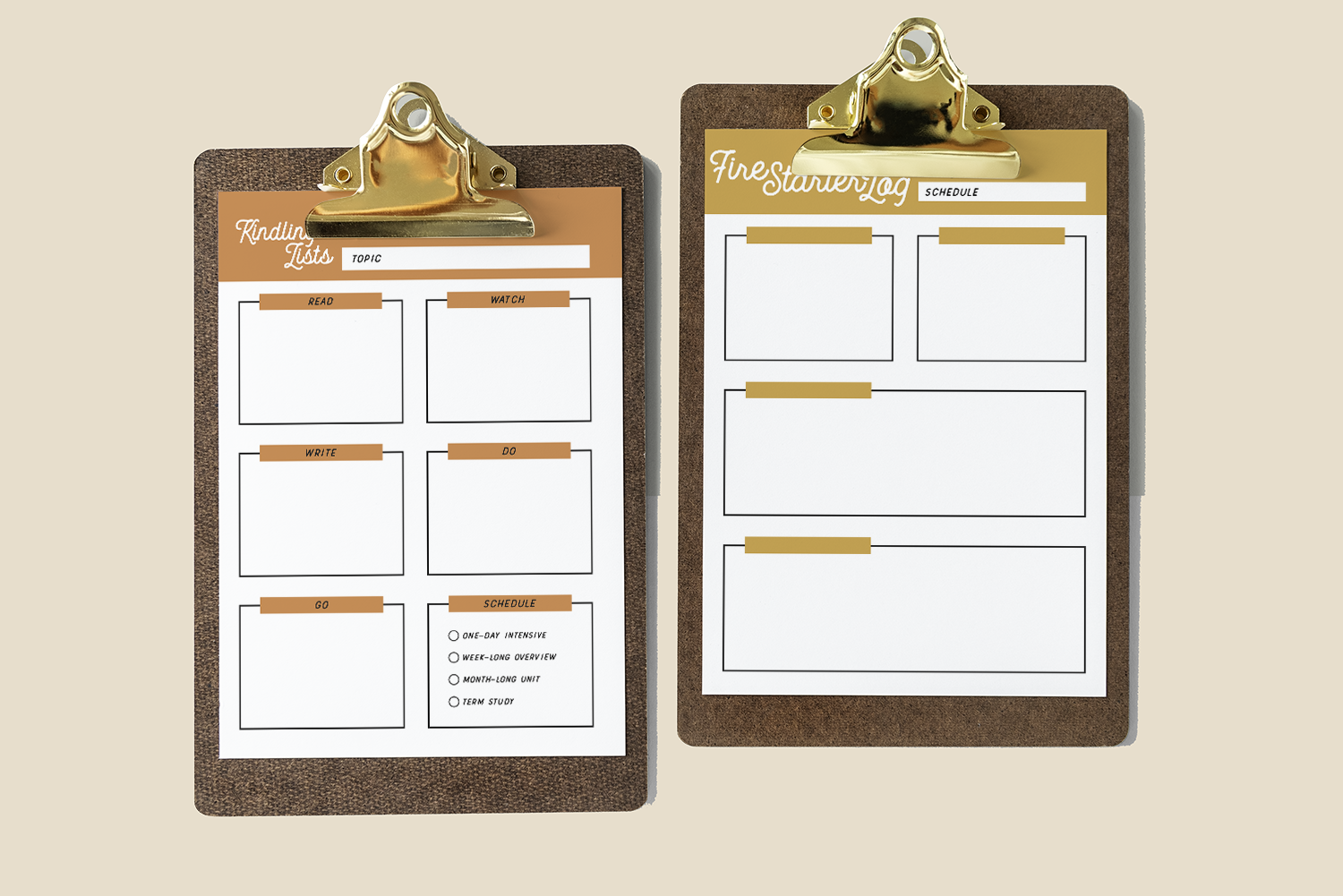kindle the spark: a planning guide for delight-directed study (free resource)
As homeschooling families, we’ve chosen a lifestyle that gives us an incredible amount of freedom and flexibility. Our children experience these blessings first-hand when they are given the space and tools to explore topics they are truly curious or passionate about in their learning. This concept of delight-directed learning is not a new one and I recognized its beauty at once when I stumbled across the “chase the spark” hashtag on Instagram. Elsie of Farmhouse Schoolhouse has used this term to share how her boys’ questions and interests can lead them naturally down a series of rabbit trails that facilitate true learning and personal connections.
This has inspired me to keep alert for “sparks” in the conversations and questions of my own boys. Often, a spark is ignited by something we’ve read or a question stirring in one of their hearts. Sometimes, the curiosity is a quick burst; easily addressed with a Google search or selection from our family library. And more often than not, these sparks don’t require any intervention on my part as my boys set off to find answers.
but, on occasion, a particularly wonderful spark will capture the curiosity of the entire family — these sparks we fan into flame with a little bit of intention and a flexible plan.
And that’s when the adventures begin!
We’ve created a simple rhythm for this type particular type of intentional, yet delight-directed learning and we’ve got exciting plans to share some digital guides of specific topics our family has covered in the near future. In the meantime, I’ve taken our process and created a simple planning guide that you can apply to any topic that seems to be a spark in your own home!
Step One: Select Your Topic
You’ll need to settle on a topic for your family’s first “spark” study. Gather your students and talk through the questions they have been asking recently, complete a quick inventory of their natural gifts and talents, think through the natural passions that come forward in their play, and examine any rabbit trails from your current studies. Sometimes your topic may be broad and wide-reaching (“I want to learn about all things nautical!”), and other times it may be more narrow and specific (“I want more information on shipwrecks in the Great Lakes!”).
Step Two: Gather Materials
The next step is to select the specific materials that will guide your study — start researching books, video clips, and field trip opportunities (even virtual ones), while brainstorming writing assignments and hands-on activities. Depending on the age of your students, you can involve them in this research step and give them ownership of the materials they will be engaging with over the course of their study. Plug your material selections into the Kindling Lists in your printout of our digital planning guide and decide on the length of your study — a one-day intensive, a week-long overview, a month-long unit study, or even a full-length term study. The schedule you choose is dependent on the interest level of your children, the amount and complexity of your materials, and your own preferences.
Step Three: Make a Flexible Plan
After selecting the pace you want to take while working through your study, you’ll want to divide the materials in a way that makes sense for your family. The Fire Starter Log in the digital guide is the place to customize how you breakdown your schedule. Below, you will find two examples for ideas on how to structure this kind of study — but truly, the possibilities are endless!
one-day intensive
morning block
+ Introduce the topic and capture student questions to explore.
+ Read through the first book selection and have students narrate.
+ Watch the first video clip and have students narrate.
+ Dive into your first hands-on learning activity.
+ Have students complete their first writing assignment.
field trip
If time allows, pack a lunch and head off on a field trip! Use the time in the car to have students share what they’ve learned so far and see if they’ve answered any of their initial questions about the topic.
afternoon block
+ Read through the second book selection and have students narrate.
+ Watch the second video clip and have students narrate.
+ Dive into your second hands-on learning activity.
+ Have students complete their second writing assignment.
sharing option
At the end of the day, have the students gather up their writing assignments, resources, and finished projects or activities to create a “mini-museum” to share with family or friends.
week-long overview
monday
+ Introduce the topic and capture student questions to explore.
+ Read through the first book selection and have students narrate.
+ Dive into your first hands-on learning activity.
tuesday
+ Watch the first video clip and have students narrate.
+ Have students complete their first writing assignment.
wednesday
+ Check-in on initial questions to see what’s been answered.
+ Read through the second book selection and have students narrate.
+ Dive into your second hands-on learning activity.
thursday
+ Watch the second video clip and have students narrate.
+ Have students complete their second writing assignment.
friday: field trip + mini museum
Pack a lunch and head off on a field trip! Use the time in the car to have students share what they’ve learned so far. At the end of the day, have the students gather up their writing assignments, resources, and finished projects or activities and create a museum to share with family or friends.
in the free planning guide for delight-directed learning, you’ll find two pages:
The Kindling Lists are to help you capture ideas for materials and to brainstorm activities.
The Fire Starter Log provides space to plug those resources and assignments into whatever schedule option works best for your family.








Welcome, friend — I’m Alle, a second-generation homeschooler with four boys living in the same mid-century ranch I grew up in.
In another season, my creative work took shape in the form of Kingdom-impacting projects for ministries and authors who were launching big things into the world — books and brands, courses and communities.
These days, I’m using those same skills and passions to create resources and tools for Homemakers and Home Educators who are building Kingdom-impacting families. You can sign up for free access to those simple projects in the Resource Library. I hope you will find some encouragement and support for your journey in this space.